Leaderboard
Popular Content
Showing content with the highest reputation on 11/28/2018 in all areas
-
I keep reminding myself that it won't fly one knot faster with the flush mounts. . it won't fly one knot faster with the flush mounts . . . I will not succumb to the peer pressure of Mooneyspace until I am ready . . . I will not succumb to the peer pressure of Mooneyspace until I am ready . . . Our Father who art in heaven . . .5 points
-
....so passed my Commercial practical today... badum dum. Ok, I may have ripped that title and punch line from POA, but oh well. Poor weather in the NE had today be the third attempt at getting this accomplished. Umm, now what? On to Multi. Where can I get a twin Mooney from? Yes, I know about the original M22 twin prototype.4 points
-
I am in no way qualified to answer your question, but since it’s the internet i’ll give it a shot, then vigorously defend my uninformed opinion agains all those with more knowledge than me: Looks like #2 CHT has the same pattern. EGTs don’t seem to change that much. I wonder if it’s the baffles or something to do with the probes or harness?4 points
-
I finally got my baby back today after a long and extensive refurbish. N201JJ is the 51st 201 to come off the line in Kerrville. It’s been in the family since new in ‘77. Now she is ready for my kids. Special props to KSMooniac for the inspiration some years back. I’ve loved his airplane since I first saw it here on the site. We made a few changes to make it our own.3 points
-
I just did mine last summer in Airtex seats. The main reason was that I was redoing my whole interior and wanted all the fabrics and colors to match. From a cost perspective, it's really not cheaper than having a local upholsterer do it. The up side is that you can do it at your own pace, which is particularly useful if you're doing your whole interior as I did. Additionally, you can do extra work on your seat frames while you have everything stripped. The workmanship of the Airtex products is exceptional. The downside is that what you get in the package is glued foam forms, sewn fabrics, a big flat panel for the rear seat back, and no instructions. This was my third aircraft interior, and I'm an A&P, and I still found a friend who had done car and airplane interiors to help. Some pieces were intuitive and some weren't.3 points
-
Our first annual update. There are two issues that my A&P is investigating. First, rudder motion is about 1/2" side to side with feet on the pedals. He says that it should be no more than 1/8". Looking for warn rod ends. Second, right landing gear seems to be out of rigging- when gear are full up, it is short of touching upper limit of wheel well by about 1/2 inch, which coincides with an approximately 1/2" gap on the gear door. Left main gear is full up. We'll try adjusting tomorrow. Long day, but hugely interesting for us! I find it seriously incredible the amount of "stuff" that happens in that 4" deep space below your feet in the M20. And that the aluminum floor is 0.032" thick. Oh- installed LED indicator light in parallel with fuel pump. That is cool.3 points
-
Ha! My uninformed opinion was right!!! Anyone want my thoughts on relationship advice, financial matters or other subjects for which I am similarly unqualified?2 points
-
Passed your commercial! Good for you. Now get a paying job in aviation. Let someone else support your habit.2 points
-
These kind of CHT indications are not that uncommon and are typically due to baffling. CHT3 is the main cyl with larger fluctuations. Initially CHT3 starts to fluctuate after both the plane has leveled off and ground speed has come up to cruise. Then we see fluctuations of 8-10F over about a 1 min period. Over more time in cruise, they get as large as 15F over a slightly faster period of 50 sec. CHTs 1,5, & 6 are all very stable and we see a very normal typical fluctuations in the 2-4F range in cyl #2 & #4 also - which are very typical. We also see a big more fluctuation in CHT5 in climb only, yet it stabilizes in cruise. Whereas CHT3 is pretty stable in climb but fluctuates in cruise. This is typically due to the changing air flow dynamics in the cowling. We also often see these appear right after the cowling has been R&R's with maintenance and then go away when its R&R'd again. So it could be pinched or flexible baffling that got bent the wrong way. But since this is a middle cylinder we also recommend checking the inter-cylinder baffling to make sure that's secure and not moving around. But more likely its the silicone flexible baffling and could also be a sign of its wear. Incidentally, we would not pronounce a poor electrical connection or interference from noisy ignition wires or high current without a much faster period and typically a poor connection or chaffed wires results in much larger fluctuations. But it never hurts to check the security of the connection and wiring when the cowling is off.2 points
-
Okay, Shadrach. The interest seems quite high for you to give a talk about combustion events and engine ops. How about a webinar? Maybe Mooneyspace could host it. Just a thought. We may have lots of folks on here with knowledge in many different areas of flying that would want to put something together as a webinar. Live streaming on YouTube may work as well if a webinar is not available. Just a thought.2 points
-
A few points. First, some theory. An engine monitor reads each probe several times per second. Then it will apply some sort of filtering and/or averaging algorithm to the values, and that filtered value is what we see. The more filtering applied, the smoother the response but also the slower the response. We do not know how many times per second the probes are read, and we do not know what sort of algorithm is applied. Probably inside JPI only the person who wrote the firmware really knows this detail. It could be in their design spec, but who knows. Now lets address a few of the thoughts mentioned in the thread. A ground issue is not likely. Each of these probes runs both thermocouple wires all the way back to the JPI. The measurements do not depend on the engine being grounded. The terminal connections between the JPI and the thermocouple are suspect however. I plan to review mine. AC coupling from the alternator is not too likely either. The alternator is several hundred cycles per second, and we are seeing 1 temperature cycle between 1 and 5 minutes. If the JPI reads the probe at the instant an interference event occurs, and if the filtering is not robust enough, we can see an effect in the result. If this is happening, figuring this out will be difficult. I find it very interesting that 3 of us have reported a similar observation. And nobody yet has posted that they have a TSIO-360 and have not seen the effect. I plan to review the tightness of the connections on my #3 probe, and if tight I will swap it out for a spare. Larry2 points
-
There is a screw on the pump that controls the retract time. When it is screwed all the way in the flaps should not retract at all. If this doesn’t happen then something is wrong. The adjustment is very sensitive. Adjust the rate to be about 10 seconds on the ground to get a good rate in the air. The way yours are adjusted the plane must feel like it is falling out of the sky when you put them up.2 points
-
Unless you have an extra 1 1/2" on the top or bottom of your 530, you will need to move everything in your center stack to fit the 750 (530W - 4.6" H vs. 750 - 6.0" H). That might be a cost not considered in your current equation. Go for the IFD 540, sell the 530W, pull the G5 (yes, there is a resale market, but they are relatively inexpensive to start) and put in the Aspen. You don't say if you have GPSS, but the Aspen will provide it for you as well as Synthetic Vision and an AOA (both of which are software upgrades and can be done in the future). If you want us to spend more of your money, just let us know as I am certain we can drop twice the budget you have into your panel with no problem!2 points
-
I got some glamour shots over Thanksgiving weekend... Here is one in case it inspires you to do something similar! Sent from my LG-US996 using Tapatalk2 points
-
We did the whole airframe replacing a few items, control rods, etc in addition to the strip and repaint. Shortly after pickup I had a failure of the fuel servo on takeoff. Not fun. So now that is all replaced with new fuel lines, etc. I also added a GDL-82 while it was down for the fuel system repair. Next is a wish list that will have to wait for a replenished bank account. On the list is JDM-900, IFD440 swap for the 430W. I'm an early PO for the STEC 3100 which would replace the STEC 50/Alt Hold/GPSS unit I have now. Finally, either dual G5s or Aspen Max. In hindsight, I chose poorly by using "Finished" in the thread title. We are never really "Finished".2 points
-
I have found the cell phone to be a really good inspection tool. It has a light and a camera and then you don't have to contort your head to see. I usually pop it there take lots of pictures then delete the bad ones. My other trick is to after several flights take a picture of the tach. Then save it to the computer. Also have a directory on the computer of all the parts tags of every component I touch or see. it's easier than going through the logs to see what parts to order.2 points
-
Ok so because i fly a sim often with a 750 i fell in love with the easy entry of airways on the 750 so that is why i devised a work around solution so that i would not have to change the gns. I installed the flight stream 210 ,. That allows me to use Garmin pilot ( and foreflight ) on the ipad . I can enter a flight plan on the garmin pilot which sends to the panel and vice versa. Allot cheaper than the 750 but obviously not perfect and missing all of the 750 functionality but it solves all of the dial turning waypoint entry issues. Basically on one button to push... " accept from ipad" on the 530w.. If you enter a procedure on the 530 the flight stream will send it directly to the ipad so it works both ways. Not perfect but it is my work around and i saved a few bucks2 points
-
We don't know how much restorative work was done to the plane prior to departure. We know it sat for a long time and that is all.. Could have been flying behind a fresh OH or factory new engine with everything inspected and in order or it could be a pencil whip special...I would not want to be the IA that signed the logs. Sad situation coupled with an interrogation by the Feds coupled with the internal question of "could I have prevented this". What I don't understand is why folks don't use flight following. Certainly there are short local trips where I don't bother, but I know from memory who to call in the event of an emergency. I would feel naked on an XC trip away from familiar airspace without it. Not likely that it would have changed the outcome of this accident but at least it would not be shrouded in mystery.2 points
-
The airplane I was talking about in my original post was flown for about 500 uneventful hours by @gsxrpilot. He sold it when he bought a 252. The new owner's mechanic adjusted the landing gear at annual and shortly thereafter the gear collapsed while taking the runway for takeoff. That's what made me scared when I read your post. It sounds like you guys are doing the work right. There can be a tendency to adjust the gear and not re-check and double check. For example, I've seen an adjustment to one nose gear rod change the preload on the main gear. So my suggestion is to adjust it until everything is right, tighten all the nuts, take a soda break, then check them all again before taking it off the jacks. And spray some silicone spray on/into the slider handle when you're in there. It'll stop you having some of the stiff gear issues that @steingar has described recently.2 points
-
Fair enough. I was going off what he daughter was quoted as saying and the fact that the plane itself had been sitting for a long time outdoors but you're right, it might have been mechanically sound all the way to the ground. Not sure which option is worse to contemplate... Either way it is a tragic loss and it is really awkward to have even considered (from afar) the very plane in question. I do appreciate you reaching out to check on me, though.2 points
-
@Shadrach, my wife liked the price but after I'd explained how much work (and money) would be involved in getting it "trustable", she quit bringing it up. It would appear I wasn't wrong, which is a bit of a curse at times like this. I don't usually post on these "plane down" threads since I've nothing constructive to add, but as always: Prayers for the family and my condolences.2 points
-
Aspen, what's the real diff between a 530w and 750 not much, bit shinier. but honestly, i'd keep it as is and spend the money on experiences.2 points
-
My two cent guess is an induced ac ripple. If engine issues one cylinder would be a concern not two especially with identical waveform. Also if mechanical the frequency would be alot slower. Don't know enough about what is under the cowl of your dragon but wire routing like@yetti suggested is very possible. Waste gate manually controlled or electric? Any electronic solenoids working at that time? Magnets spinning? Do the four sensors in question share the same connector pack to the display? Sent from my E6810 using Tapatalk2 points
-
It almost looks like "AC" voltage interference. There is no possible way the temps could change that fast in a chunk of metal like the cylinder heads. Exhaust gas could if a pipe was cracked bad but not at that frequency. Any chance a wiring issue? Sent from my E6810 using Tapatalk2 points
-
It's amazing how they got all those rods and tubes to do that.2 points
-
Way to go Larry! https://en.m.wikipedia.org/wiki/Electromigration Momentum transfer and diffusion all in one place, on the scale of ions... At MS you have to get smarter, just by being here... Best regards, -a-2 points
-
JT, I am like you. I see where you have been. I know where you want to go. You have the tools. You have been given great guidance, by knowledgeable people. Work on finding the motivation to learn about all the power that you have. Sure it helps to be mechanically inclined... Sure it helps to be computer oriented... and no, You don’t have to have rebuilt an engine in high school. Start by reading the manual for your JPI 830... there are going to be settings that you will prefer... There are going to be procedures for leaning you want to be familiar with... (take good notes on these) Learn What is needed to get data from your JPI onto your computer.... Every page is important, there aren’t that many pages... or topics. Then go to the Savvy website... Learn what a GAMI spread is. Learn how to upload your engine data up to Savvy. Or Learn to take a screenshot and share it directly here. The coolest thing you can do... collect data for a single flight, that starts right after engine startup... and continues through the taxi/warm-up/leaning, captures all phases of the run-up, watch for EGT increase, nice and clearly, full power take-off, climb to altitude, level off, set cruise power and lean for cruise, continue through the descent and landing, before shut-down watch for rpm gain while pulling the mixture... If you can do that... Your engine questions can get answered... Some people like to help other people... MS has a lot of these people... Get fired up. Do some reading. Take some notes. Get ready to ask some more questions... Don’t try to hide that you don’t know how this stuff works... that won’t help anybody. We’ve all been there, the faster you get up to speed with all your tools, the better off we all will be... Makes sense? Best regards, -a-2 points
-
2 points
-
2 points
-
@Lance Keve, congrats. I am in the same boat, passed my CPL test a month or two ago. Also looking for a twin Mooney for the ...Multi add-on.1 point
-
Depends on your definition of "big stuff". Some of it IS fun. In any case, there are paying jobs flying all sorts of things besides airliners. It all starts with that commercial license. So it's a great step.1 point
-
1 point
-
That’s a snake camera, hard to control, I think you need a rigid articulating camera : Vividia Ablescope VA-400 USB Rigid Borescope Endoscope with 180 Degree Articulating 8.5mm Diameter Probe https://www.amazon.com/dp/B00GY7C9ZW/ref=cm_sw_r_cp_tai_BQV.BbVC39ZVJ1 point
-
1 point
-
The victor airways is a nice feature on the newer GPS units. I don't get those much, but it threw me for a loop the first time on my 430.1 point
-
I missed where he said he tapped the brakes prior to gear retraction. Not everyone does that. I too was taught to stop the wheels before gear retraction (due to bearings being subjected to the torque caused by the angular momentum of the spinning wheel). However, my sense is that that load pales in comparison to those imposed on the wheel during taxi, take off and landing.1 point
-
The rules change is interesting... It allows the pilot to make the judgement call... Did you fly the desk through the proper number of approaches and holds, or did you pencil whip the log book instead? Early on in my IR flying I was surprised by how easy it was to fly IFR and not get any actual approaches in... Nothing beats actual, but logging a bunch of desk flown approaches, is better than losing currency altogether... Of course, I have thousands of hours of desk flown Bravo time flown in MSFS... and my IR has been dormant for years... This gives me a ray Of hope of getting back in that saddle somewhere out in the future... Best regards, -a-1 point
-
The eagle eyes of a professional. Yep. I put it there then checked for binding with the video camera. Then torqued the bolts, then had the grump IA come and check my work.1 point
-
If youre looking at aspens, id take the 530w out and slide an avidyne 540 in there. If youre planning on keeping The g5's, the 750 will work great with that. If youre doing aspen, i like the 540.1 point
-
Based on what I learned tonight, the Paramounts were used all the way to the early J models (through serial number 24-0763). The guy at Lasar just assumed I had the original Paramounts and sent me the kit for them. The owner before me was pretty meticulous on being more than proactive on things (like installing shoulder harnesses). The masters I have are on J models from SN 24-0764 THRU 24-3200 & 24-3202 THRU 24-3217. And what appears to be food particles on the reservoir is actually the fines from me scrapping all that excess RTV off of the flange. Sent from my iPhone using Tapatalk Pro1 point
-
Wait for me! I'm in Manassas, VA and while I am flying K instead of an F, I would love to be bored to tears with combustion theory and application!1 point
-
What do you use to fall under the seat or into the trim wheel well if your pens are secure?1 point
-
Most owners in this thread are talking about the G5 as if it is the only option for a backup attitude indicator (AI). My MSE has a RCA 2600-3 RC Allen electric backup AI with a 107-0001-01 Emergency Standby Power battery system. Together these two make an outstanding backup AI and together they only cost about $3,800 plus installation labor. My system is 4 years old so I pulled the breaker in flight yesterday to check the backup battery. After a 1.5 hr flight the battery was still registering more than 80% charge with the screen intensity set at 100%. The fact that the instrument is electric allows me to reduce wear and tear on it by only powering it up when I fly IFR. This also applies to the steam gage turn coordinator. I have an ASPEN as primary AI and no vacuum system in the airplane. See pic. Also, I have heard owners talking about removing the steam gages when they install an Aspen. I didn't because, if you're flying IFR, it is comforting to have a steam gage backup for every instrument in the Aspen (accept the VSI). My panel plus an iPad/EFB with an external WAAS GPS sitting on the glareshield results in a pretty nice setup if I have a total and irrecoverable loss of electric power.1 point
-
Savvy Test Profile is something that anyone serious about getting the MOST out of their engine, should be familiar with. And by MOST I mean the most hours, the most performance, the most efficiency, the most range, the most safety, and the most fun. I do the inflight Mag check portion of the test about once a month. And I run the full test profile about every six months. It's easy to do, and if you really know your engine, the results should be predictable. *you don't need GAMI's to run this test. You do need a proper engine monitor.1 point
-
I've had my C for 11-1/2 years. I have no idea if the parking brake works or not. But I have looked, and there's a knob at the bottom of the panel labeled "Parking Brake." It's by the left yoke, Cabin Heat is by the right yoke. Hope you get this figured out!1 point
-
I'd ask the IA what panels he wants opened up, or you may spend a lot of time screwing screws in and out that could be left alone. The belly will likely need to be opened up, but my IA only wanted a few of the wing panels opened which saved a ton of time. Leaving stuff alone that doesn't need to be touched is also a safety issue. There's still plenty to do when assisting with an annual. I was busy the whole time.1 point
-
I probably have 500 hours in manual gear and 600-700 in electric gear Mooneys. I would take manual gear every time.1 point
-
I’ve read that if running out of fuel or otherwise there is a fuel problem, first indicator is the fuel pressure fluctuates. Might be helpful if running a tank to empty. I wonder if a clogged fuel injector would cause fuel pressure to increase?1 point






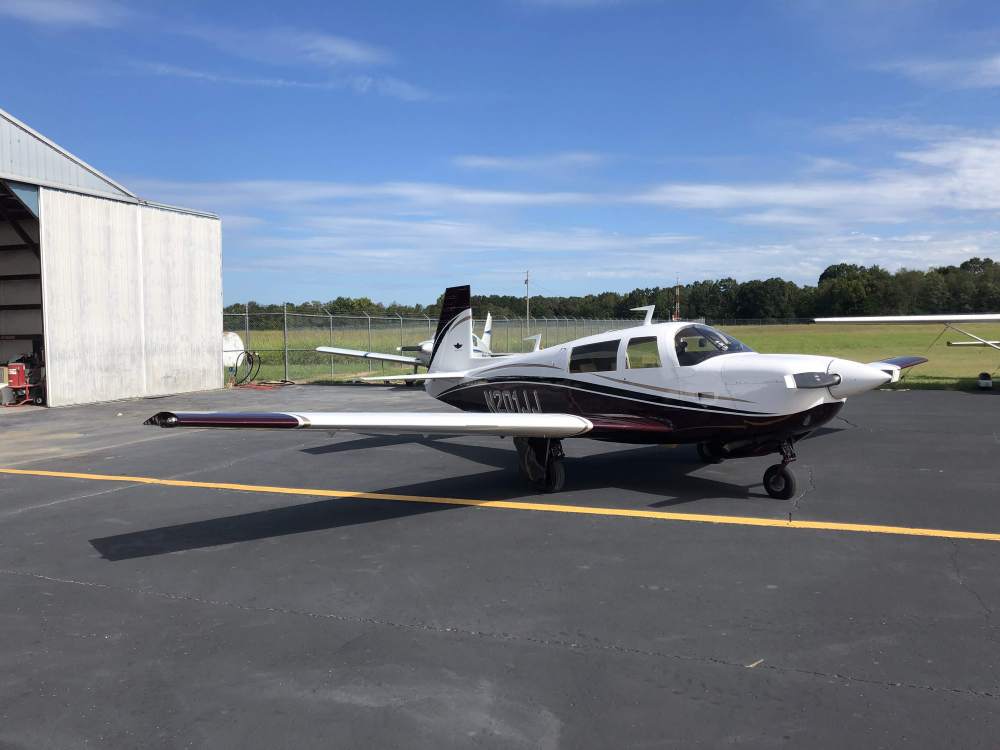
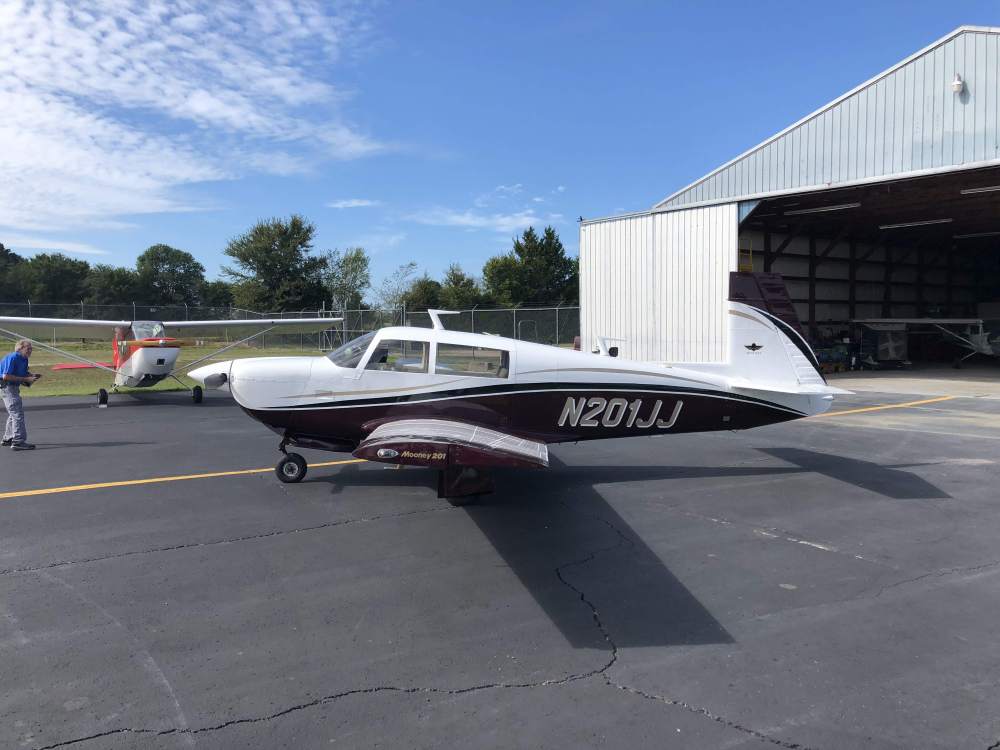



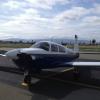

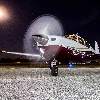

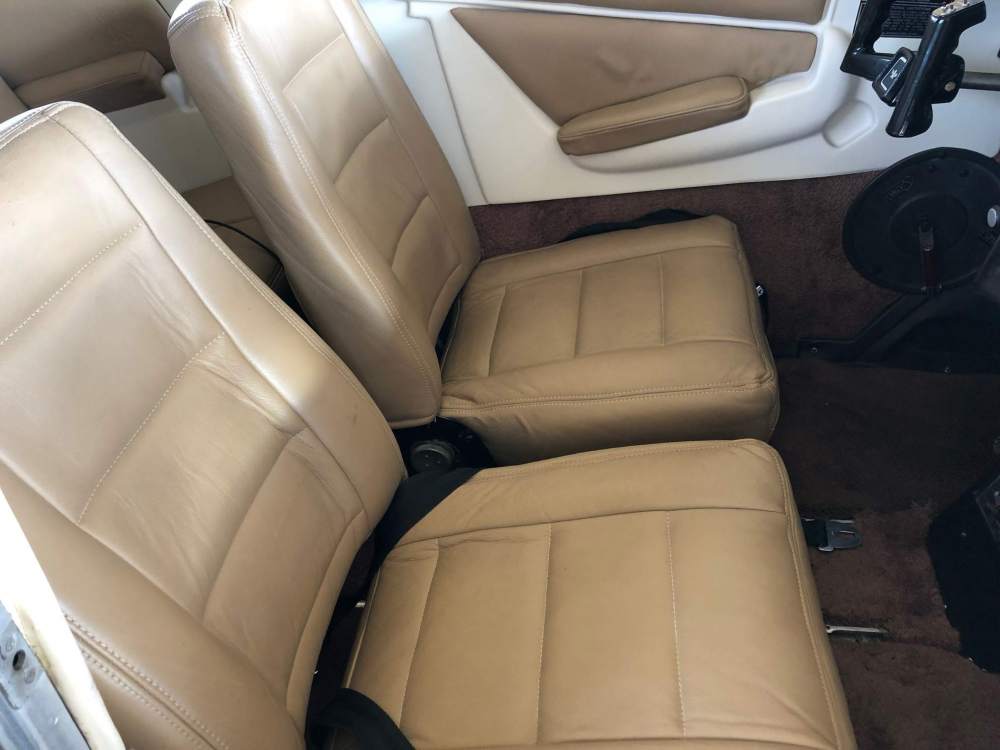
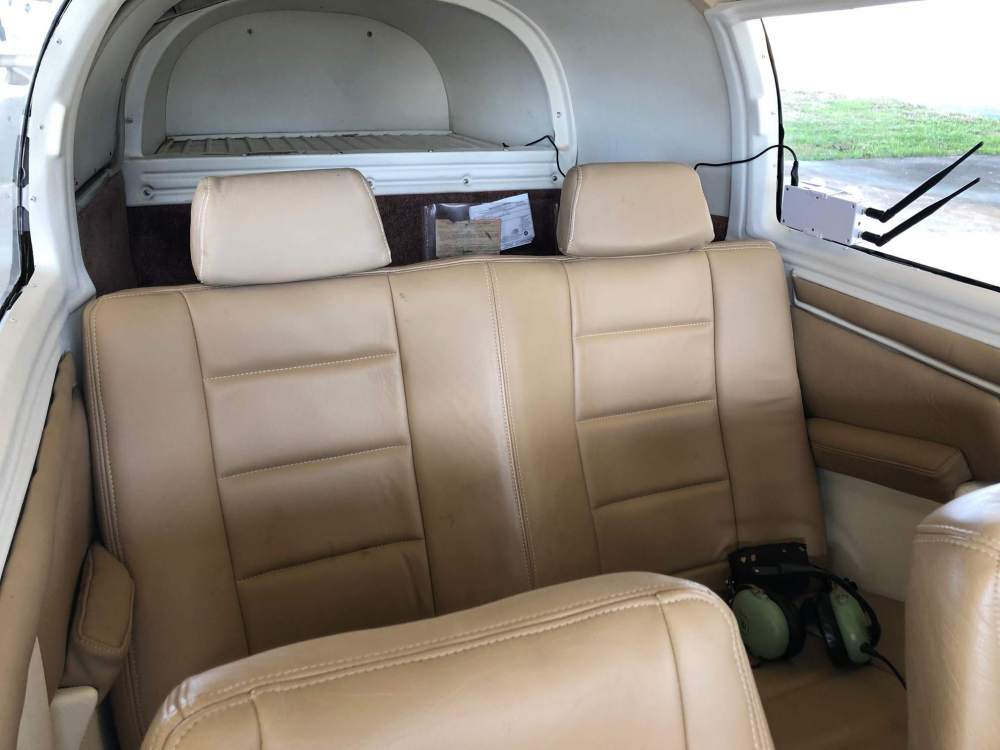

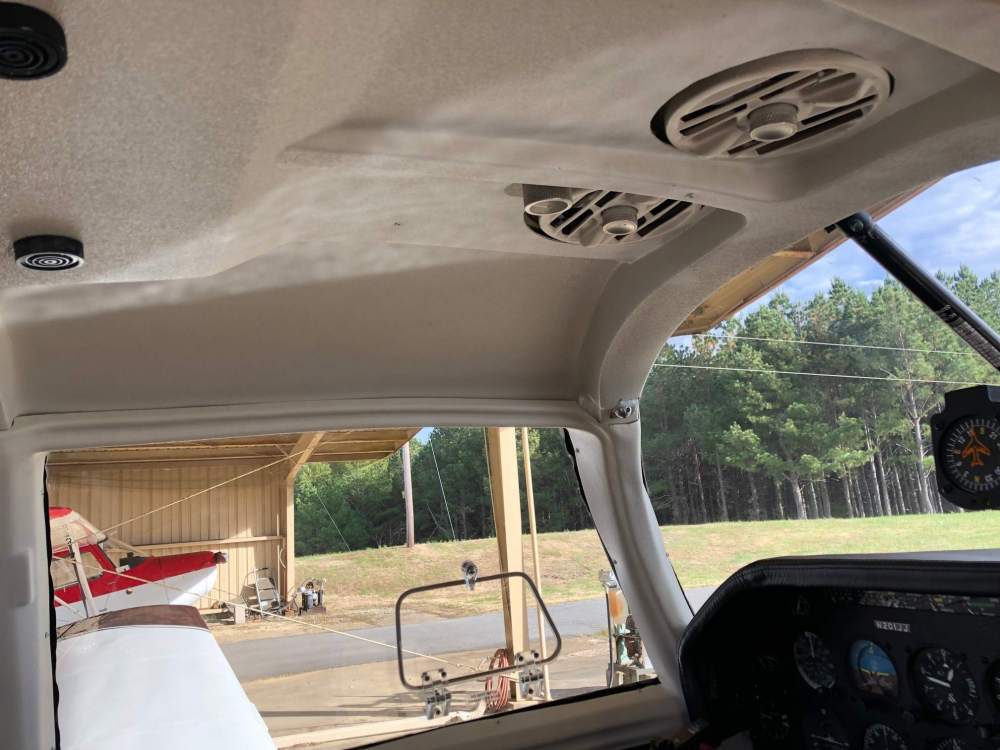
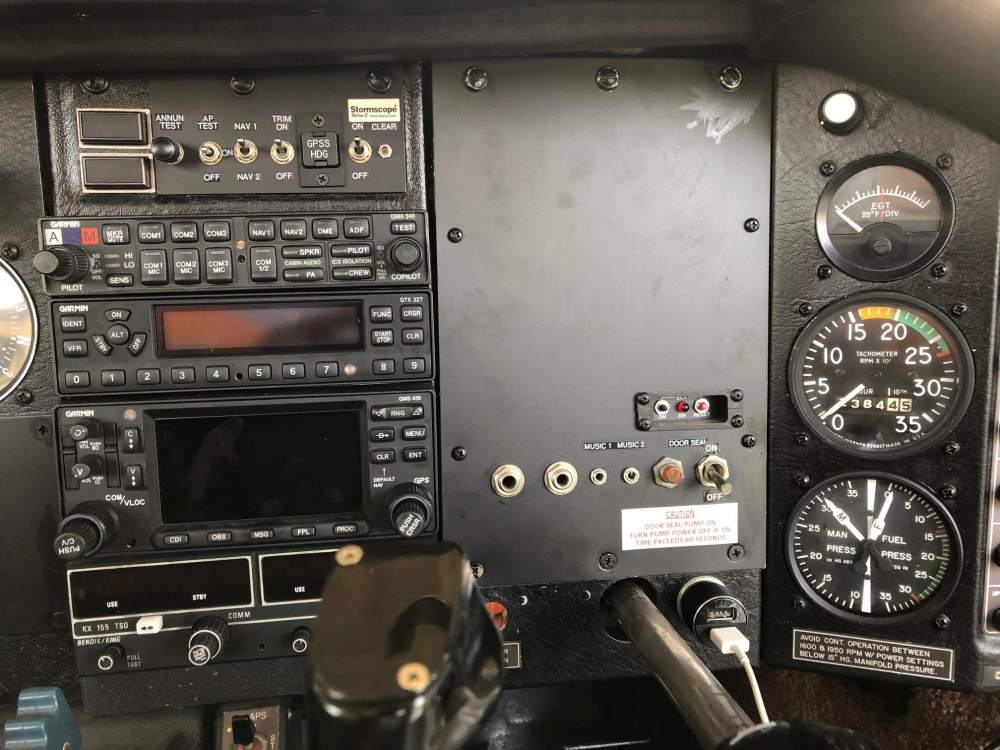
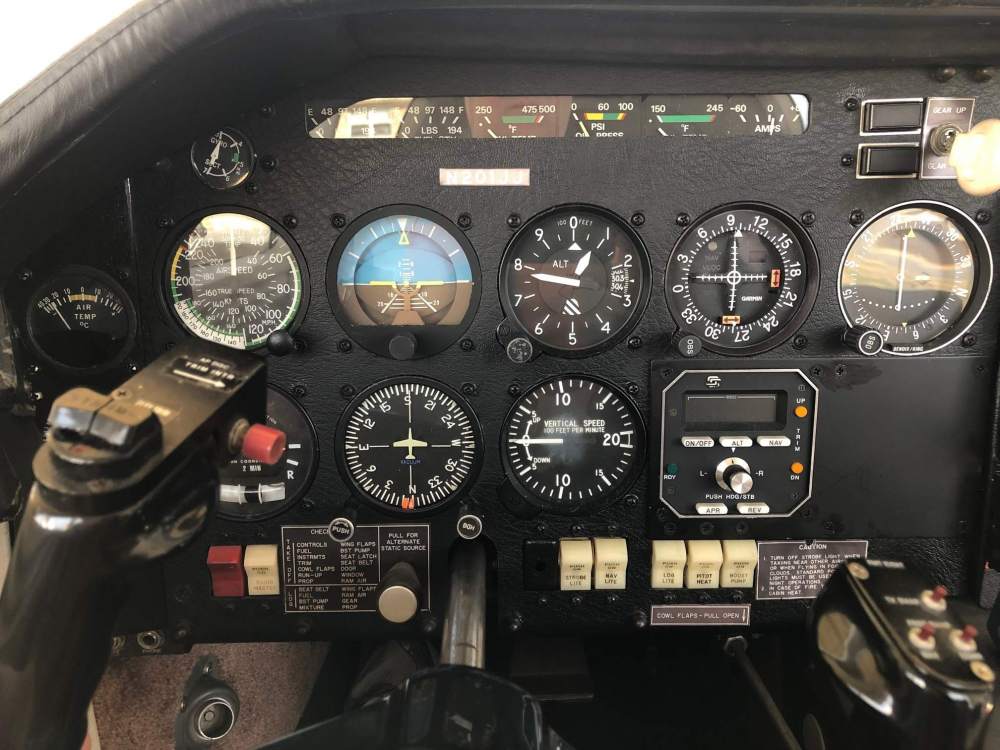
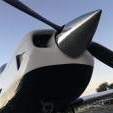


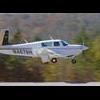





.thumb.jpg.3d9196a203c05f212f2d51a7c03359c4.jpg)


